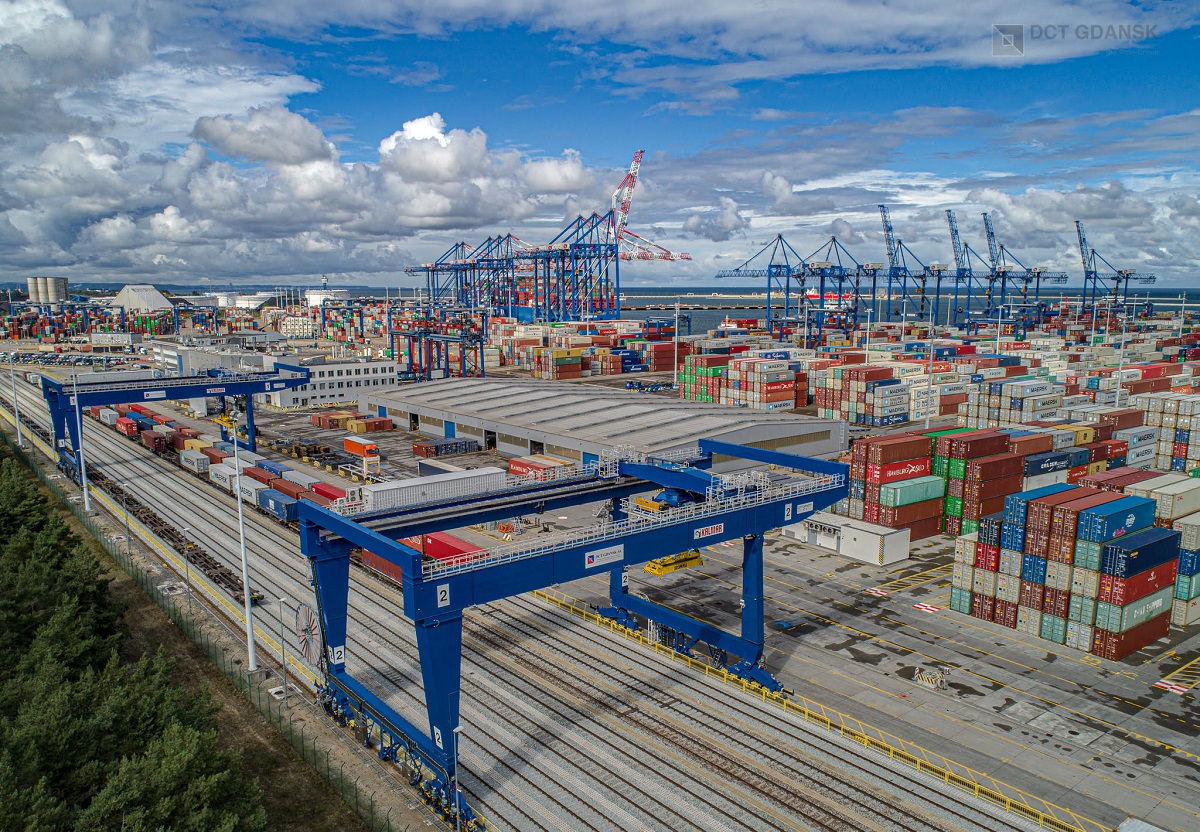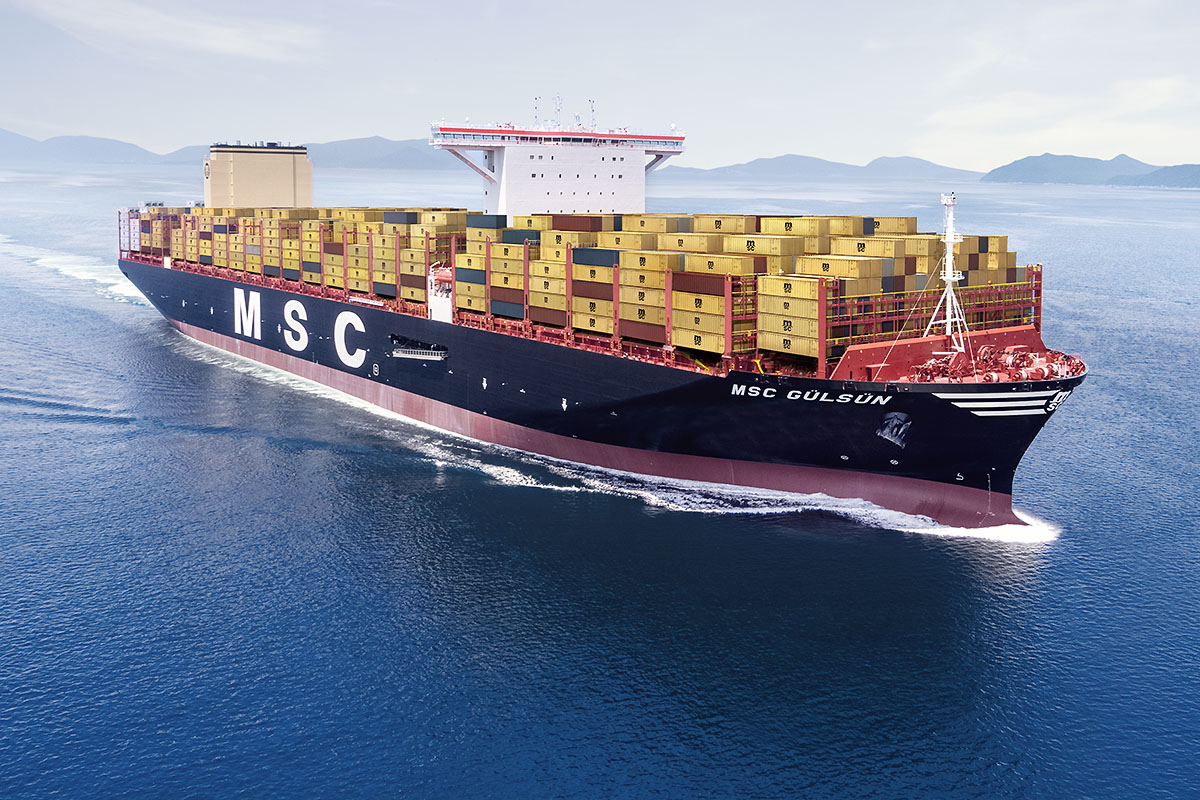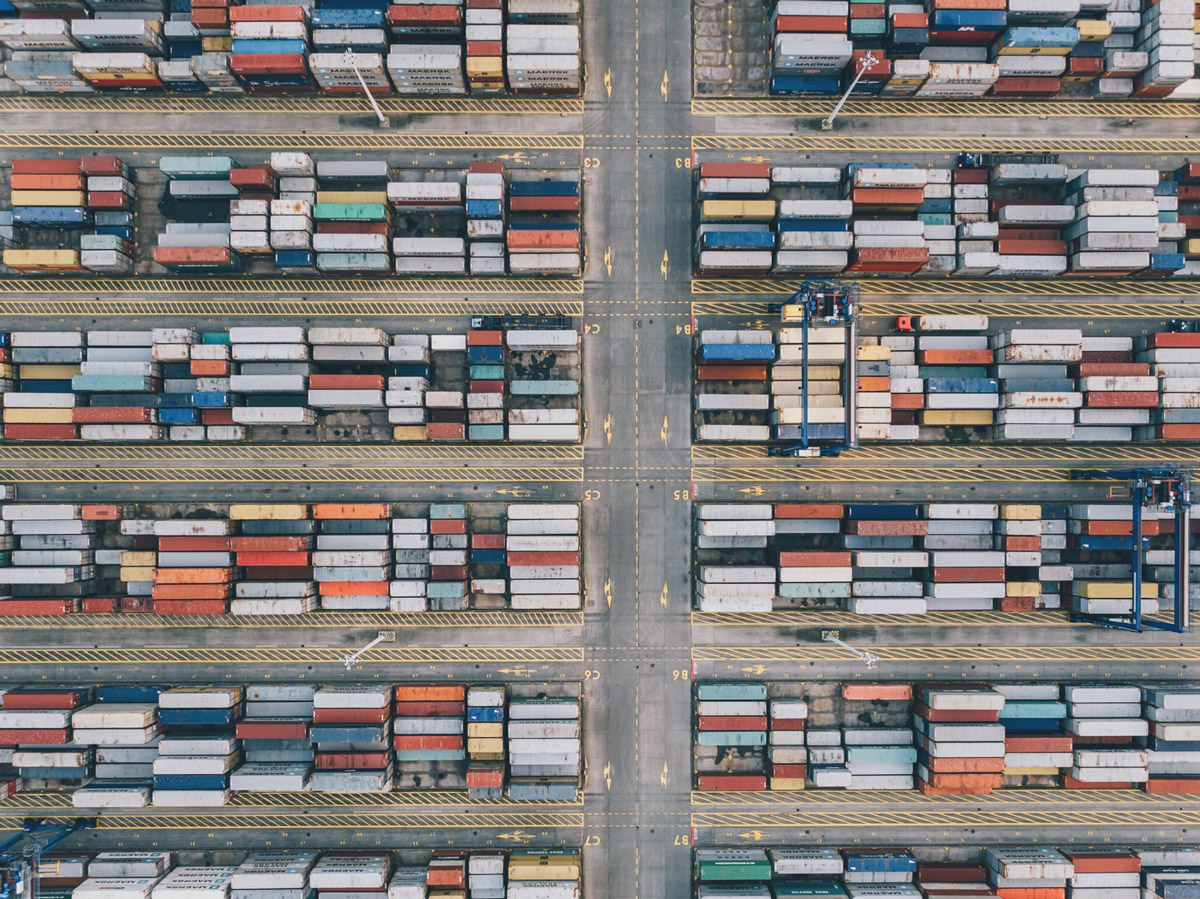DCT Gdansk (“DCT”), operating one of Europe’s ten largest port rail terminals, has completed the expansion of its rail terminal with an annual handling capacity of 750,000 TEU. The new investment opens many opportunities for growth in inland markets and provides a more economical and environmentally friendly alternative for DCT’s customers.
From 618 to 750 meters. From 4 to 7 tracks.
The rail terminal expansion, which began in 2018 and was completed in 2021, extended the tracks from 618 to 750 meters. In addition, the rail siding was expanded from 4 to 7 tracks. Furthermore, fully electrified RMG rail cranes were purchased, and an OCR camera system for recording trains and containers was put in place. As a result, DCT has increased its rail handling capacity to 750 thousand TEU.
– With this expansion, we offer our customers a product that is reliable, cost-effective, and most importantly, environmentally friendly. We already boast the largest intermodal terminal in Poland and one of the ten largest port rail terminals in Europe, handling over 5,500 trains per year. Thanks to the latest modernization of the terminal, we will effectively double the current capacity of the tracks. The expanded infrastructure will allow our customers to access even more efficient rail services,” said Charles Baker, DCT CEO.
Customers will be able to generate significant cost savings compared to other ports in Southern or Western Europe by taking advantage of the shorter rail route between DCT Gdansk and Central European countries. The terminal operator will work with the industry to develop intermodal services to/from landlocked countries and regions adjacent to Poland such as the Czech Republic, Slovakia, Western Ukraine and Belarus.
Green alternative for landlocked markets
– We are directly represented on the Czech and Slovakian markets, allowing our southern neighbors to take full advantage of DCT’s forwarding capabilities. With competitive delivery times and extensive rail links, we guarantee a lower carbon footprint per container than other European ports. Our experience and range of services gives inland customers a better, cheaper and greener alternative for moving their goods,” continues Charles Baker.
The opening of the expanded rail terminal is a significant step in DCT’s development. In addition to the terminal expansion, the entry gates to DCT have been fully automated with OCR cameras. Finally, the number of modern quay cranes at Terminal 2 has been increased to eight, the storage yard has been enlarged and additional equipment has been purchased to support them: 5 Rubber Tyre Gantry electric yard cranes.
Since the start of operations in 2007, DCT has had two terminals, Terminal 1 and Terminal 2, with a combined annual throughput of 3 million TEU. DCT was also the first terminal with direct connections between Asia and the Baltic Sea. Currently, it is the only Polish and Baltic destination for the largest vessels in the world, on routes from China, Korea and other Asian countries.
source: PortalMorski.pl




